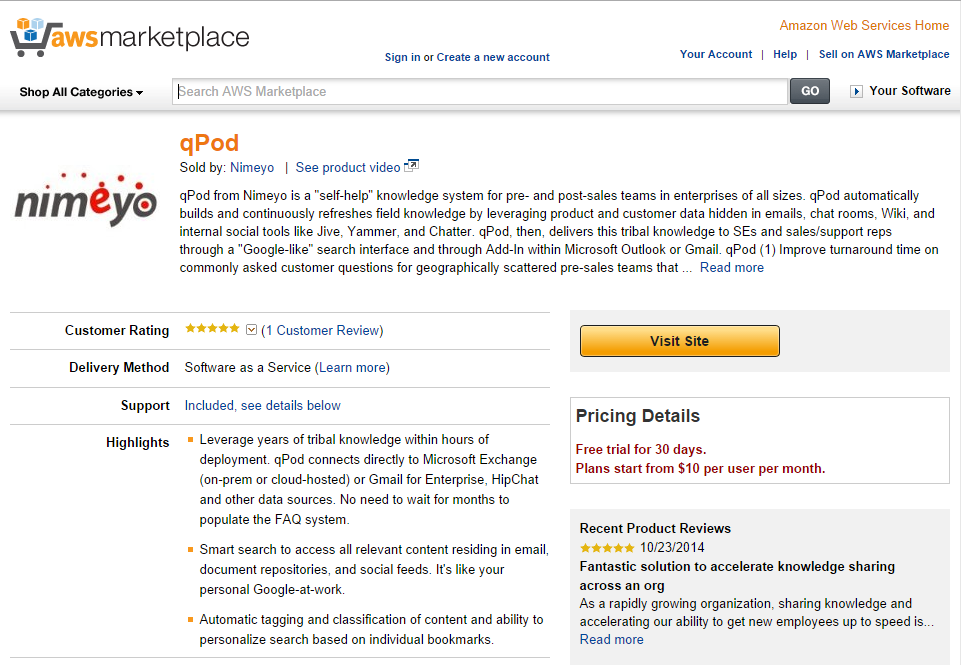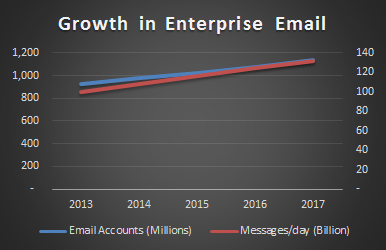My toddler has an impressive collection of toys. He tries to keep his favorite ones somewhere “safe” but then he cannot find them when he wants to actually play with them. While trying to find it, we both know that the one that we are looking for is somewhere in the house and yet it remains alluringly out-of-reach since the exact places we determine to look for never have it. It’s frustrating for him to have this happen on regular basis.
Unfortunately, millions of enterprise employees feel similar frustration when they can’t find the information that they know is around them in various forms. They could be in mailing lists or in SharePoint or Box repositories, or in internal chat rooms, or on some internal wiki pages.
Realizing the potential value of unearthing information that employees need to do their jobs, companies – particularly large ones – employ enterprise search. Unfortunately, most of those engines remain poorly deployed and minimally used by the end users.
 So the question is why do enterprise search engines do such a poor job at engaging users whereas search outside of the corporate firewalls are part of our daily lives?
So the question is why do enterprise search engines do such a poor job at engaging users whereas search outside of the corporate firewalls are part of our daily lives?
Although there are number of technical reasons, we believe the key problem is a “lack of user-orientation”. In other words, these solutions are neither attuned to the actual needs of the end users nor they understand the data itself in a meaningful way to be able to serve it in a meaningful way.
Let’s take few examples –
- Content and Users: Search engines’ key strength is in indexing wide ranging data types – web pages, documents, CRM systems etc. So when user searches with few keywords, search engines define success by uncovering wide-ranging data in a sequential manner based on some ranking criteria.However, not all data types are created equal. For instance, email communications are a lot more meta-data rich and time-relevant compared to documents. If used intelligently, such data specific analysis can be immensely useful in understanding how row communication relates to the end user needs.
- User interface: Needless to say, we all are used to typing a simple search query (or question where there is a unique answer – e.g. “Father’s day 2015”) and expecting search engine to return “satisfactory” results. However, in a corporate context, this model is highly limiting as any one article or document is unlikely to provide a comprehensive answer in most real world scenarios.For example, when a sales rep gets into a competitive situation, a query like “MyCompany vs MyCompetitor” should surface variety of information including product differentiation, pricing, and nuggets from other similar situations. All these pieces are equally important to put together a competitive tactic to win the opportunity. A linear listing of results based on uniform ranking criteria does not do justice to needs of that sales rep.A UI that allows users to navigate through these various pieces in a consistent manner and “assist” in creating a cohesive picture would be much more effective in creating engaging user experience.And finally,
- User preferences and behaviors: In most of our enterprise search experience, presentation of results is “black magic”. Let’s say you searched for some information today, worked through the hits and were fortunate to find what you were looking for at the 20th You had to put the effort but you found what you were looking for!Unfortunately, say a month from now, if you are looking for the similar information through a similar query, you would still find the information deep down in the ranking.If solutions allowed ways to capture user preferences – expressed implicitly and explicitly – it would be able to return results that are a lot more aligned with what the end user needs are.
We at Nimeyo believe that to achieve the true potential of enterprise search, we need to stop viewing it through the prism of consumer search technologies.
To fulfill the promise, enterprise search products must understand not just who the user is and what role she performs in the organization but also identify optimal mechanism through which to deliver knowledge to the employee.


